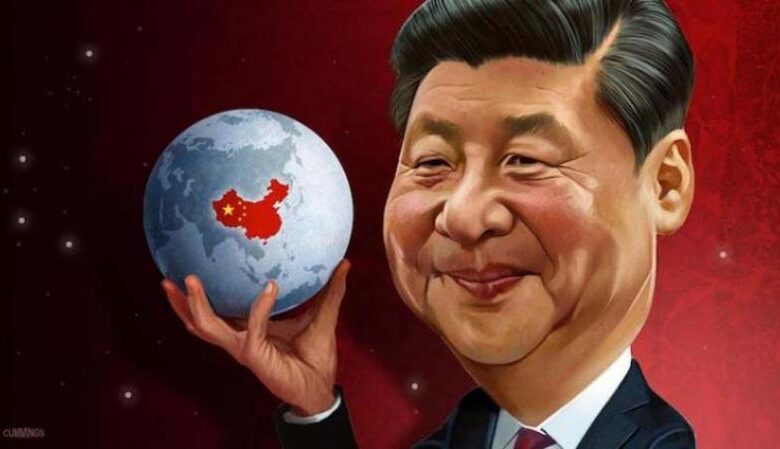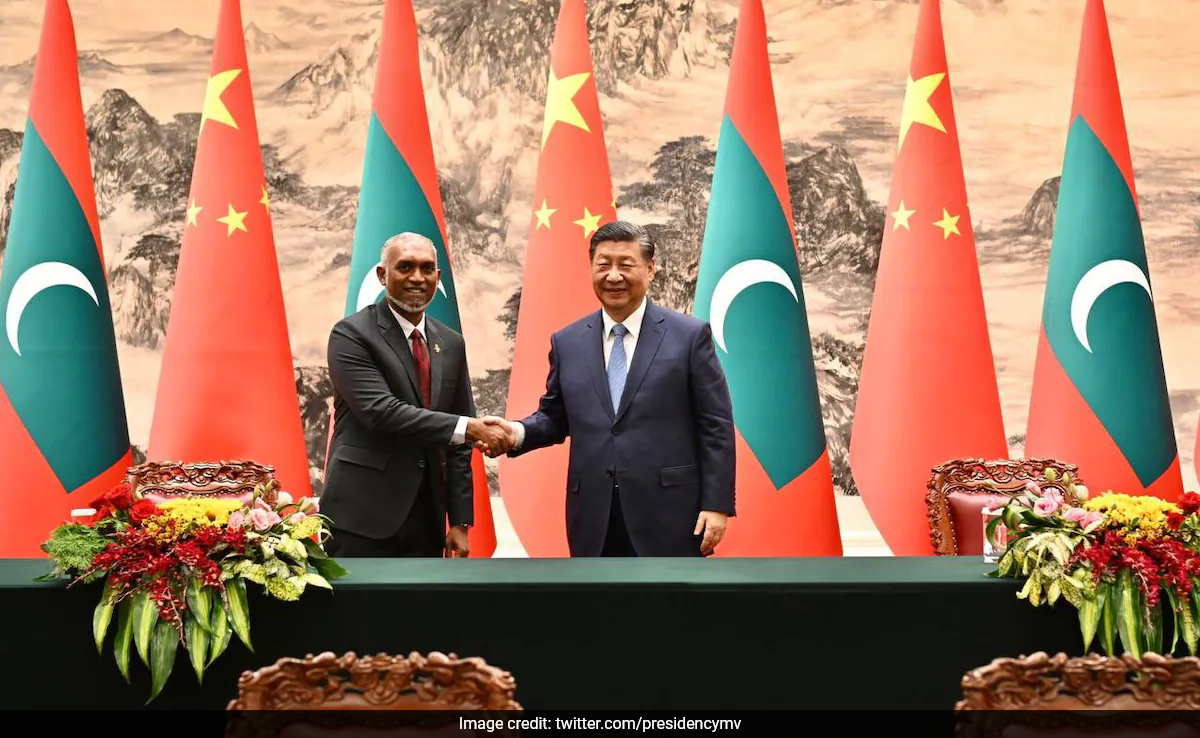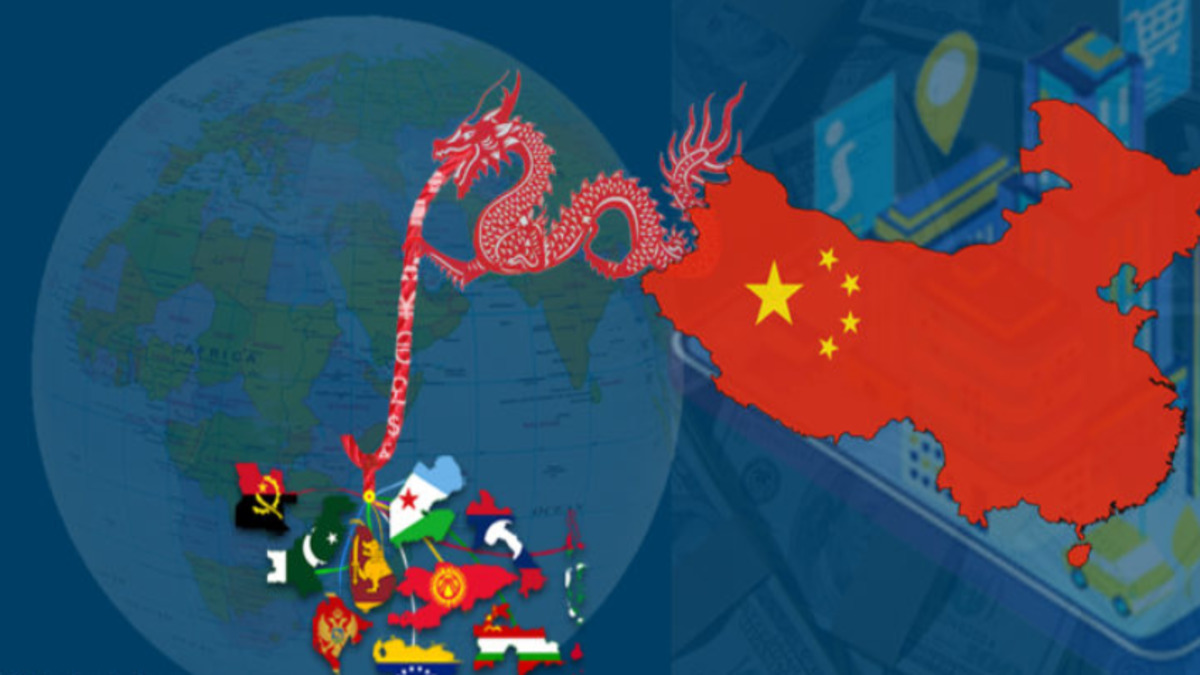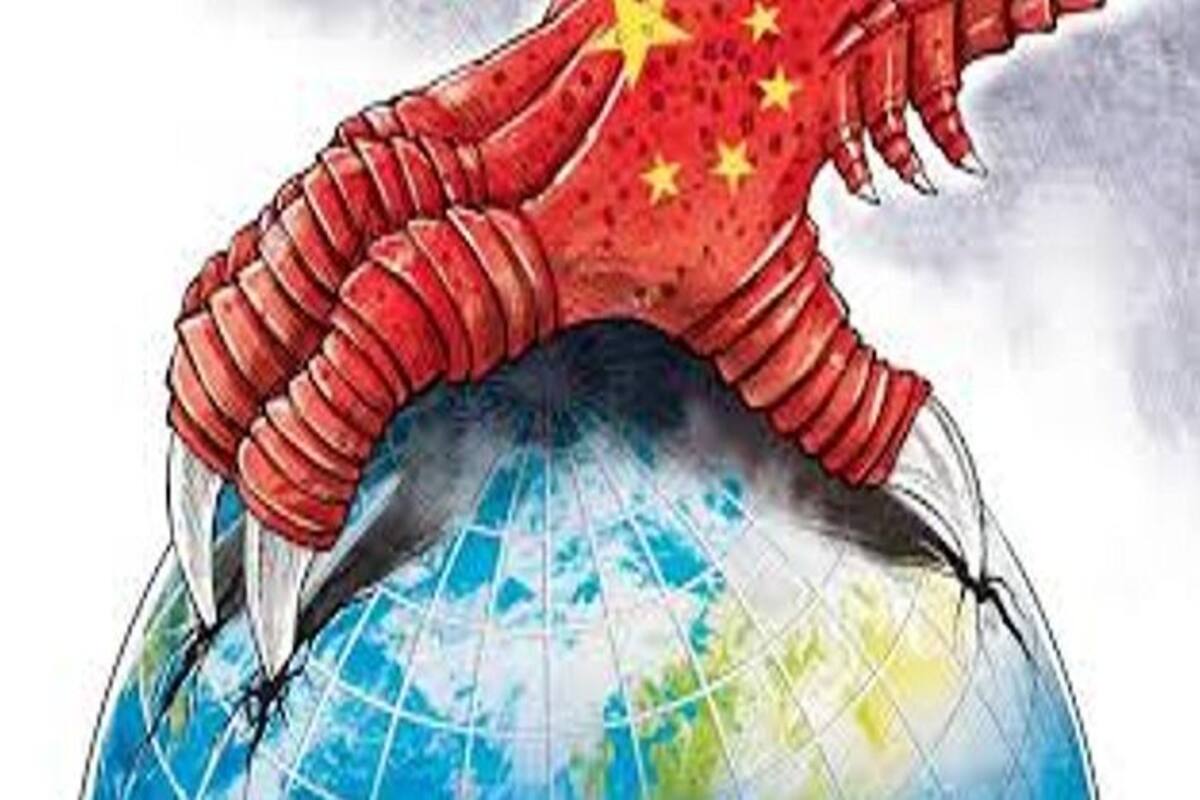Maldives Headed Toward Bankruptcy, Cautions IMF; How Under The Umbrella Of China, Poor Countries Are Being Stripped Bare
In the aftermath of strained relations with India and growing proximity with China, the Maldives finds itself at a critical juncture. IMF has sounded a recent warning as mounting debt and increasing ties with China, concerns over debt distress loom large for Maldives. On the other hand, this scenario, even as it plays out, is nothing new as increasingly economically strained countries under China's 'friendly hand' face ironically similar situations as they grapple with 'Chinese Debt'.

Maldives faces a heightened risk of both external and overall debt distress, according to the IMF, particularly due to the growing influence of China within the island nation.
Hence, the IMF, in its report, has called out for urgent policy adjustments, emphasizing that without significant changes, fiscal deficits and public debt are expected to remain high.
The economy of Maldives is under significant strain due to substantial loans acquired from China, amounting to over $3 billion and cautioned Maldives about the elevated risk of ‘debt distress’ as the country’s ties with China deepen.

The Deep Shift
Muizzu assumed the presidency of the Indian Ocean nation in November, riding on a campaign platform dubbed “India Out,” which criticized New Delhi’s significant influence as a threat to sovereignty. Since then, Maldives has noticeably fostered a friendly relationship with China, with Beijing promising additional financial support.
His administration has also requested the departure of numerous Indian military personnel stationed locally in what appears to be a deliberate move to assert independence from India.
Leaning Toward China
As per a statement released by his office during his visit to Fuzhou, a key city marking the beginning of China’s maritime “Silk Road,” Muizzu reiterated the importance of China as one of his country’s “closest allies and developmental partners”.
He also emphasized the significance of the two countries’ free trade agreement; Muizzu underlined the prioritization of increasing fish product exports to China.
With fishing being the primary source of employment in the Maldives, where the vast majority of the territory is comprised of the sea, Muizzu wants to capitalize on the crucial role of aquatic products, which constitute over 98% of exports by volume and value.
Additionally, he expressed his government’s interest in exploring partnerships under President Xi’s Belt and Road Initiative, particularly focusing on infrastructure projects such as the expansion of the central airport and commercial port.
)
Chinese Investments
China has already played a significant role in expanding the Velana International Airport in Male and constructing the cross-sea China-Maldives Friendship Bridge under the Belt and Road Initiative to foster a global trade and infrastructure network.
Data from the American Enterprise Institute think tank reveals that Chinese firms have invested $1.37 billion in the Maldives since the country’s decision to join the Belt and Road Initiative in 2014.
Tourism is a vital sector for the Maldives, with Chinese tourists representing the largest group of foreign visitors in 2019 at 19.7%. However, due to pandemic-related restrictions, their ranking slipped to third place by 2022.
On the other hand, the presence of Indian nationals as tourists in the Maldives has become more pronounced, particularly during periods when pandemic measures deterred Chinese visitors.
The Warning
The World Bank, in its October report, raised concerns about the potential for the Maldives to fall into a ‘debt trap’ if it further deepens its ties with China.
The existing debt of $1.37 billion to China already accounts for approximately 20% of the nation’s public debt; notably, China stands as the largest bilateral creditor to the Maldives, surpassing Saudi Arabia and India, to which it owes $124 million and $123 million, respectively.
It should be noted that the former President Mohamed Nasheed, in 2018, characterized Beijing’s lending as part of a “debt trap.”
However, despite accusations of predatory lending practices, Beijing denies such claims, asserting its commitment to mutually beneficial partnerships with developing economies.

The Financial Trap
According to the World Bank report, Male incurred $162.3 million in interest payments between January and August 2023, marking a 15% increase from the previous year.
This figure significantly surpasses the annual average between 2014 and 2019, which stood at $85 million.
The report also highlighted a concerning trend of heightened sovereign exposure during the pandemic and a lack of domestic investment opportunities, despite calls by Muizzu for additional Chinese funding.
The “Invest Maldives” website showcases various investment opportunities across ten sectors, including tourism, renewable energy, banking and finance, and agriculture, aiming to attract potential investors and promote economic diversification.
The Dragon On The Prowl
China’s loans are driving some of the world’s poorest nations to the brink of collapse.
A dozen economically vulnerable countries, including Pakistan, Kenya, Zambia, Laos, and Mongolia, are already grappling with the burden of hundreds of billions of dollars in foreign debt, much of it owed to China, a formidable and stringent lender.
An in-depth analysis conducted by the Associated Press reveals that servicing this debt is increasingly straining these countries’ finances, diverting vital tax revenues away from essential services such as education, electricity provision, and food and fuel subsidies.
Moreover, it’s depleting their foreign currency reserves, which are crucial for servicing interest payments on these loans, leaving some nations with only a few months before they exhaust their reserves entirely.

What makes the debt trap worse is China’s reluctance to consider debt forgiveness and its opaque lending practices, which have hindered efforts by other major lenders to intervene and provide assistance.
Additionally, there’s been recent uncovering of requirements for borrowers to deposit funds into undisclosed escrow accounts, prioritizing China as the primary creditor to be repaid.
Countries examined in the AP’s analysis have as much as half of their foreign loans owed to China, with many allocating over a third of their government revenue towards servicing these debts.
Notably, Zambia and Sri Lanka have already defaulted, unable to meet even the interest payments on loans funding critical infrastructure projects.
Hence, the repercussions are severe.
For instance, in Pakistan, where China has a massive presence, mass layoffs have occurred in the textile sector due to excessive foreign debt, leading to power outages and factory closures.
In Kenya, salary payments to civil servants have been delayed as the government scrambles to allocate funds to repay foreign loans.
Sri Lanka‘s default a year ago triggered widespread job losses, soaring inflation rates, and a significant rise in poverty levels.
Therefore, experts warn of further defaults and political instability unless China adopts a more flexible approach towards its lending practices to poorer nations.
According to Harvard economist Ken Rogoff, the repercussions of China’s actions could have enduring geopolitical ramifications, leaving a lasting impact on global stability and economic dynamics.

The Devastating Impact of China’s Lending Practices, A Case Study of Zambia
In the southern African nation of Zambia, home to approximately 20 million people, the repercussions of extensive borrowing from Chinese state-owned banks over the past two decades are sharply evident.
While the infusion of billions of dollars into the Zambian economy for infrastructure projects such as dams, railways, and roads initially bolstered economic growth. However, the accompanying surge in foreign interest payments has left the government financially constrained, compelling it to slash spending on critical sectors like healthcare, social services, and agricultural subsidies.
Traditionally, when countries faced similar debt challenges, established lenders like the U.S., Japan, and France often engaged in negotiations to alleviate the burden, occasionally forgiving portions of the debt.
However, China diverged from this approach, refusing to participate in multinational discussions and instead opting for bilateral negotiations with Zambia. This lack of transparency extended to loan terms, preventing other creditors from discerning the conditions and China’s priority status for repayment.
Amid mounting pressure, Zambia sought temporary relief by appealing to non-Chinese lenders to suspend interest payments, albeit unsuccessfully.
As a result, the depletion of foreign currency reserves accelerated, jeopardizing the country’s ability to meet its financial obligations.
By November 2020, Zambia defaulted on its loans, triggering a cascade of economic crises, including soaring inflation rates, record unemployment levels, and currency devaluation, plunging millions into poverty.
The dire consequences are felt acutely by ordinary Zambians, whose meagre welfare payments have been slashed, leaving them struggling to afford basic necessities like food.
What compounded the distress even more was that subsequent investigations revealed that Zambia’s debt to Chinese state-owned banks was significantly higher than previously estimated, thus worsening the nation’s precarious financial predicament.
As the International Monetary Fund and World Bank advocate for debt forgiveness to alleviate the burden on struggling economies, China remains reluctant to incur substantial losses on its loans.
This impasse has left many nations trapped in a cycle of debt servicing, hindering economic growth and exacerbating poverty.
However, the repercussions extend beyond Zambia, with other countries grappling with similar challenges aggravated by external factors such as geopolitical tensions and monetary policy shifts.
For example, Honduras and Pakistan have taken drastic measures to secure alternative funding sources, signalling a shift in diplomatic alliances and economic strategies.

China Not To Back Down
China’s response to criticisms has been characterized by a defence of its lending practices, emphasizing efforts to provide relief through extended loan maturities and emergency funding.
However, experts caution that without significant reforms, the current trajectory threatens to plunge numerous nations into further economic turmoil.
The Last Bit: The unfolding crisis stresses the urgency for greater transparency and accountability in international lending practices, especially when it comes to China, as the welfare of vulnerable nations hangs in the balance!




